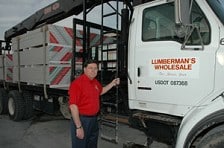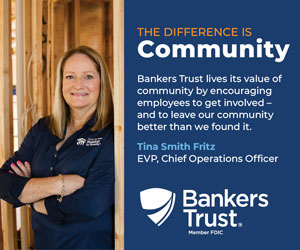Building success in small business
.floatimg-left-hort { float:left; } .floatimg-left-caption-hort { float:left; margin-bottom:10px; width:300px; margin-right:10px; clear:left;} .floatimg-left-vert { float:left; margin-top:10px; margin-right:15px; width:200px;} .floatimg-left-caption-vert { float:left; margin-right:10px; margin-bottom:10px; font-size: 12px; width:200px;} .floatimg-right-hort { float:right; margin-top:10px; margin-left:10px; margin-bottom:10px; width: 300px;} .floatimg-right-caption-hort { float:left; margin-right:10px; margin-bottom:10px; width: 300px; font-size: 12px; } .floatimg-right-vert { float:right; margin-top:10px; margin-left:10px; margin-bottom:10px; width: 200px;} .floatimg-right-caption-vert { float:left; margin-right:10px; margin-bottom:10px; width: 200px; font-size: 12px; } .floatimgright-sidebar { float:right; margin-top:10px; margin-left:10px; margin-bottom:10px; width: 200px; border-top-style: double; border-top-color: black; border-bottom-style: double; border-bottom-color: black;} .floatimgright-sidebar p { line-height: 115%; text-indent: 10px; } .floatimgright-sidebar h4 { font-variant:small-caps; } .pullquote { float:right; margin-top:10px; margin-left:10px; margin-bottom:10px; width: 150px; background: url(http://www.dmbusinessdaily.com/DAILY/editorial/extras/closequote.gif) no-repeat bottom right !important ; line-height: 150%; font-size: 125%; border-top: 1px solid; border-bottom: 1px solid;} .floatvidleft { float:left; margin-bottom:10px; width:325px; margin-right:10px; clear:left;} .floatvidright { float:right; margin-bottom:10px; width:325px; margin-right:10px; clear:left;} Gary Scrutchfield is a businessman who pays his bills on time and, even though he’s locked into a recession-battered construction sector, also manages to turn a profit.
He found out last year that the combination isn’t always good enough.
Scrutchfield owns Lumbermans Wholesale Inc. in Des Moines. It supplies steel framing materials, roofing products and dry wall to the construction industry. He has been in the business for better than three decades, long enough to combine business savvy with street smarts when it comes time to dodge a falling economy.
In 2008, he was part of the U.S. Small Business Administration’s Emerging 200 (e200) program, which at the time was targeted for inner-city businesses that showed some potential for growth.
Just getting involved in the program was a bit of a leap for Scrutchfield, who admits to sporting enough of an ego, especially in the construction trade, to wonder what an outsider can teach him. He had a change of heart, although, like any good businessman, his ego has remained intact.
“Just to be able to understand what the government can do for a small business person, it’s invaluable,” he said. “You can’t buy that kind of experience. I was shocked at how good it was.”
Through the program, he was introduced to bankers and other lenders, venture capitalists and other small business owners who, in 2008, were starting to feel the effects of an economic slide to recession.
“I established good friendships; we were sounding boards where you can say ‘I’ve got this, I’ve got that,'” Scrutchfield said. “You ask, ‘What’s going on; is it going on through the whole economy?'”
All of that give and take, combined with exposure to financial experts and training on development business plans and inventory schedules, came in handy the next year, when Scrutchfield found himself looking for a new bank after 20 years with the same lender.
In 2009, after local banks had suffered losses from loans to major developers, such as Regency companies, that had shuttered their doors and defaulted on loans, credit for construction was drying up.
Scrutchfield said he hadn’t lost a nickel to the troubled developers. When the companies got big enough to attempt to dictate his prices, it was time to drop them as customers.
“You reach a point where they want to be it and you have to walk away,” he said. “Everybody in the business told me I was crazy.”
Apparently, so did his local lender.
Scrutchfield said his long-time bank told him that it didn’t want to be in the building materials and construction business anymore.
“They told me to leave,” he said.
He heard the same message from more than a dozen Greater Des Moines banks.
“They told me that if it had been last year (2008) they would have jumped at the deal,” Scrutchfield said.
Scrutchfield even visited the Iowa Small Business Development Center in Ames to find out what, if anything, he should be doing differently. He brought his financial statements, business plan, inventory, even a list of all of the equipment used by the business.
He was told that he didn’t need any help. He just needed a bank.
Eventually, he wound up at Liberty Bank, where his line of credit was established.
Liberty Bank was the second-leading lender of SBA-backed loans last year, running behind First American Bank in Clive. West Des Moines-based Liberty Bank wrote 27 loans for a total of $8.6 million. First American Bank wrote 51 loans for $23.5 million, the most in Iowa in terms of loans written and dollar amount.
Shane Greenleaf, vice president of commercial lending for Liberty Bank, said his institution is committed to supporting small businesses, especially when they meet underwriting standards and come with strong personal references, as did Scrutchfield.
“I think the philosophy is sitting down and being able to talk with future business owners and current business owners and figuring out that they have the will and the passion and the desire to be a success with their business,” he said. “As a banker it gives you a better feeling about taking a risk with this person.”
After talking to Scrutchfield, there was little question that he understood his market.
“I think what it really boiled down to with Gary was that his business sense is pretty impeccable,” Greenleaf said. “When you meet Gary you just know that he knows what he is talking about, and that what he says is straight from the heart and that he’s true to his word.”
Scrutchfield said there was little question that his company was in a down cycle last year, but it remained profitable. He cut his crew of warehouse drivers by 40 percent, and sales dropped 18 percent. He also cut inventory, in part because of the slow economy but also because a severe winter meant there would be less construction.
“If you look at Greater Des Moines, there aren’t a lot of major construction projects,” he said.
Instead, work in the health care sector and tenant build-outs and remodels have contributed to orders.
He noted that in 2008, residential construction made up about 70 percent of his business, with commercial picking up the balance. Those percentages have reversed.
Scrutchfield remains an optimist.
He started calling back warehouse drivers last week, one at a time. And he is certain that residential and commercial construction will turn around.
“We aren’t going to be living out of tents,” he said.









